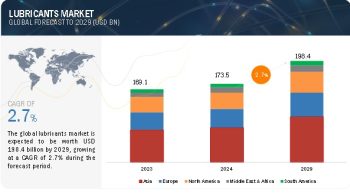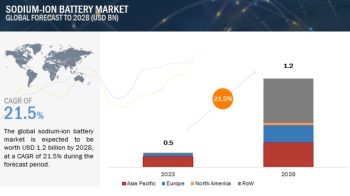
The global post-consumer recycled plastics market size to grow USD 18.8 billion by 2025, at a CAGR of 5.7%. Post-consumer recycled resins or plastics are obtained by recycling the plastic waste collected from consumers. Consumer plastic waste includes bottles, films, and foams. Post-consumer plastic waste management includes recycling, recovery, and disposal of plastic waste. Additionally, waste management systems ensure the safe collection, segregation, storage, transportation, processing, and disposal of generated plastic waste. Post-consumer recycled resins also ensure that no harm is caused to the environment during this process and that the process is undertaken in accordance with the regulations and standards prescribed by governments or associations.
Request Sample Pages: https://www.marketsandmarkets.com/requestsampleNew.asp?id=222347130
An increasing trend in terms of collection, domestic recycling, recovery of plastic, the export of plastic waste, and implementation of legislative regulations has been witnessed in the market for post-consumer recycled plastics. These activities have significantly contributed to the growth in demand for methods/services pertaining to plastic waste management. The strict laws pertaining to waste management and disposal, along with the increasing awareness of the adverse impact of accumulating plastic waste, have led to the involvement of the public sector (such as municipalities) and the private sector in plastic waste management.
The post-consumer recycled plastic market has been categorized, based on polymer type, service, processing type, end-use application, and region. The segments based on polymer type are polypropylene, low-density polyethylene, high-density polyethylene, polyvinyl chloride, polyurethane, polycarbonate, polystyrene, polyethylene terephthalate, other thermoplastics (thermoplastics such as SPI code 7 plastics), and other plastics (melamine-formaldehyde, bakelite, and other thermoset resins).
The market, by service, has been segmented into collection & transportation, recycling (sorting, cleaning & drying, shredding, pelletizing & product manufacturing), incineration, and landfills. The end-use applications considered in this report include packaging, building & construction, automotive, electronics, furniture, and others (textile & clothing, specific application in aerospace & defense, toys, and other stationery products). Based on key regions, the market is segmented into North America, Europe, APAC, the MEA, and South America. APAC accounted for the largest share in 2019 in terms of value.
Certain factors prevail in the market that hinders the growth of this industry. Some under-developed and emerging economies do not have the required infrastructure for plastic waste collection, segregation, and disposal. They have a lesser number of plastic waste recycling plants. Sometimes, the cost incurred on the plastic waste recycling process (collection, segregation, transportation, shredding, cleaning, and other processes) is more, which makes the manufacturing of products out of virgin plastic cheaper.
Request Customization: https://www.marketsandmarkets.com/requestCustomizationNew.asp?id=222347130
The Asia-Pacific (APAC) region is anticipated to dominate the post-consumer recycled plastics market, holding the largest market share. This growth can be attributed to the region’s substantial population, rising industrialization, and increased demand for sustainable packaging solutions. As environmental awareness grows and regulations become more stringent, the adoption of post-consumer recycled plastics in APAC is expected to continue its upward trajectory, making it a key player in the global market.
Veolia Environnement S.A. (France), SUEZ (France), Waste Management Inc. (US), Republic Services Inc. (US), and Stericycle Inc. (US) are the key players operating in the post-consumer recycled plastics market.


